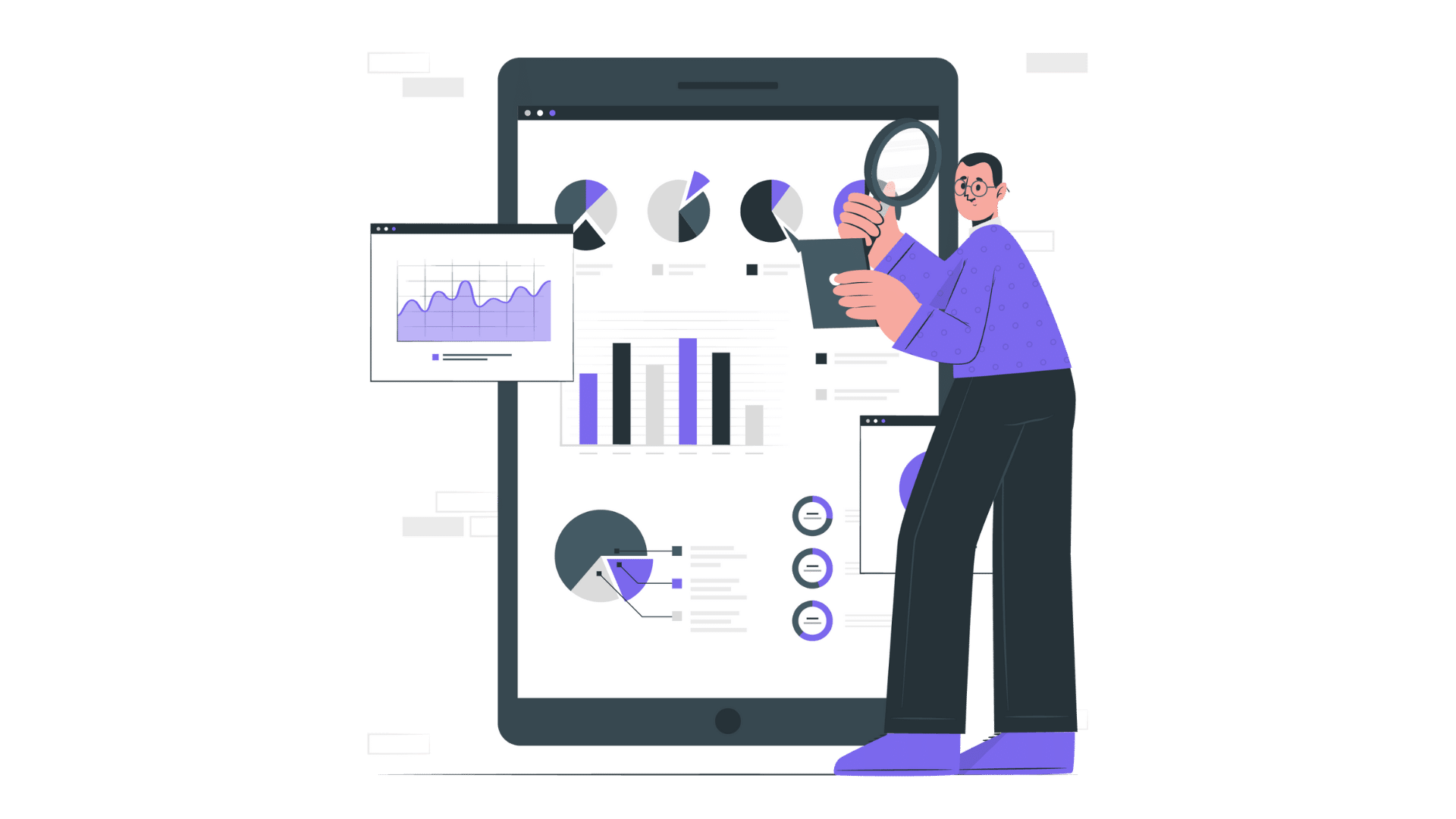
With so much data at your fingertips, it’s easy to feel overwhelmed or unsure about what really matters. That’s why focusing on CRM metrics is crucial — to stay on top of your sales processes, improve customer satisfaction and ultimately drive more revenue. And tracking the right metrics can make all the difference in how you manage your relationship with customers and employees alike.
In this blog, we’ll explore a few CRM metrics that you should be aware of and keep an eye on. By the time you’re done reading this article, you’ll have a clear understanding of how these metrics can guide your decisions and keep your team on the path to success.
Customer relationship management or CRM metrics are the measurable data points within your CRM system that track various aspects of customer interactions and business processes. These metrics tell you how effectively your business is managing relationships, from lead generation to customer conversion and retention.
Key CRM metrics include:
Customer acquisition cost (CAC)
Customer lifetime value (CLV)
Sales conversion rate
Churn rate
Lead response time
Customer retention rate
Average deal size
When you start measuring these metrics, you will be able to evaluate the efficiency of your strategies, identify areas for improvement or bottlenecks if any, and make informed decisions that will eventually drive sales and enhance customer satisfaction.
Let’s discuss the above metrics in detail.
CAC helps you understand how much money you’re spending to turn a prospect into a customer. It includes costs like marketing expenses, sales team salaries and other related expenditures. By tracking this metric, you’ll get to know if your customer acquisition strategies are working (in other words, cost-effective) and if there’s room to further optimise your spending.
With CLV, you can estimate the total revenue a customer is likely to generate during the course of their relationship with your brand. This metric is vital because it helps you identify which customers are most valuable to your business, and where you should focus your retention efforts. A high CLV indicates strong customer loyalty and a successful long-term relationship.
Your sales conversion rate measures the percentage of leads that have turned into paying customers. It’s a clear indicator of how effective your sales process is. A high conversion rate suggests that your team is doing a great job at closing deals, while a low rate may point to issues that need addressing, such as the quality of incoming leads or the effectiveness of sales pitches.
This metric shows the percentage of customers who stop doing business with you in a given time period. A high churn rate is a red flag that indicates problems with customer satisfaction, product quality or service delivery. Reducing churn is essential for maintaining a stable customer base and ensuring steady revenue growth.
Lead response time measures how quickly your agents follow up with new leads. Fast response times are crucial because they increase the likelihood of converting leads into customers. Studies show that leads contacted within an hour are much more likely to convert than those contacted later, making this metric a key focus area.
This metric measures the percentage of customers who continue to do business with your brand over a specific period, helping you understand how well you’re keeping customers and how many are leaving. When retention rates are high, it shows that customers are happy and satisfied with your brand. If the rates are low, it could mean problems exist and they need fixing. Retaining existing customers usually costs less than finding new ones, so it’s important to pay attention to this metric.
This metric shows the average value of closed deals, helping you understand the monetary worth of your customer base. Tracking average deal size can highlight opportunities for upselling or cross-selling, boosting overall revenue.
Knowing which CRM metrics to track is only half the battle; the real value lies in how you use these insights to propel your team forward. Here are a few tips to help you better leverage CRM metrics to make smarter decisions, improve your strategies and ultimately achieve better results.
Before diving into the data, it’s crucial to know beforehand what you want to achieve with your CRM metrics. Whether it’s increasing sales conversion rates, reducing customer churn or boosting customer lifetime value, having specific targets allows you to measure progress accurately. In addition, setting benchmarks based on industry standards or past performance helps you determine if your efforts are paying off or if it’s better to rethink your strategies.
CRM metrics should be reviewed on a regular basis, not just occasionally or when problems crop up. Round-the-clock analysis of your data helps you spot trends, identify potential issues before they become major problems and implement corrective measures. For example, if you notice a sudden drop in your conversion rate, you can investigate the cause and take corrective action immediately. Regular reviews also help you stay aligned with your business goals and ensure that your efforts are focused on the right areas.
Not all customers are the same, so it’s important to segment your data to gain deeper insights. For instance, you can break down your customer base by demographics, purchase behaviour or engagement levels to understand the nuances of each group when interacting with your business. This segmentation allows you to tailor your marketing, sales and customer service strategies to better meet the needs of each segment. It can also help you identify high-value customers or at-risk accounts that require special attention.
Data is only valuable if it leads to action. Use the insights gained from your CRM metrics to make informed decisions that drive positive change in your business. For example, if your lead response time is longer than desired, you might implement new processes or tools to speed up follow-ups. If your customer retention rate is low, you could launch loyalty programs or improve your customer support. The key is to take actionable steps based on what the data is telling you, rather than just collecting data and not acting upon it.
CRM metrics data shouldn’t be kept in a silo — they’re most effective when shared across your organisation. Regularly communicate the insights derived from key metrics with sales, marketing and customer service teams to ensure everyone is aligned and working towards the same goals. Encourage team members to use the gathered insights in their day-to-day activities, whether it’s refining sales pitches, creating targeted marketing campaigns or improving customer interactions. By involving all your internal teams in the process, you create a data-driven culture that leads to better decision-making and more cohesive efforts.
Many CRM systems offer automation features that can help you track and report on metrics more efficiently. Automating repetitive tasks, such as data entry, lead scoring or follow-up reminders, not only saves time but also reduces the risk of human error. Automation also allows you to focus more on analysing the data and less on gathering it, leading to quicker and more accurate insights. More importantly, it ensures that your team can act on the data in real-time, improving customer response time.
The business landscape is always evolving and so should your strategies. Use CRM metrics to continuously refine your approach based on what’s working and what isn’t. For instance, if your customer acquisition cost is rising, it might be time to revisit your marketing strategy or explore new channels. If your sales cycle is getting longer, consider providing additional training for your team or re-evaluating your sales process to shorten it. The goal is to use the data to stay agile and responsive, adapting to changes in the market or customer behaviour as they arise.
Whenever you implement a new strategy or make changes based on your CRM metric data, it’s important to measure the impact. Measure the relevant metrics before and after the implementation to check if it’s made a positive difference. This approach allows you to validate your decisions, learn from what works and make any tweaks if needed. It also helps you build a solid case for future strategies and investments by demonstrating the tangible benefits of data-driven decision-making.
Now that you’ve got a clear understanding of the essential CRM metrics, it’s time to put them to work.
Don’t just let these numbers sit in your CRM software — use them to drive real change in your business. Whether it’s refining your sales process, improving customer retention or optimising your marketing efforts, the insights you gain from these metrics can be the key to unlocking your business’s growth and success.
If you’re considering a switch from your current CRM software, we recommend booking a demo of Telecrm — India’s most effective sales CRM. Start tracking, analysing and acting on your data today with a tool designed to help you achieve tangible results.


© Copyright 2025 Telecrm.in - All Rights Reserved • Privacy Policy • T&C


© Copyright 2025 Telecrm.in - All Rights Reserved • Privacy Policy • T&C